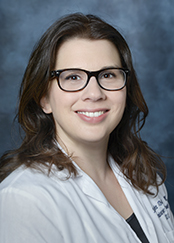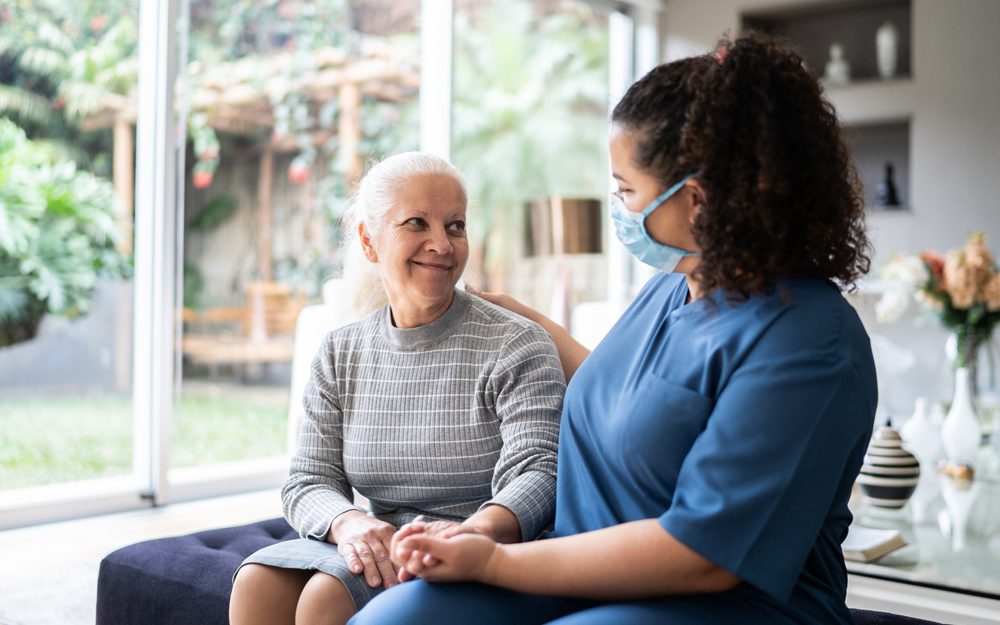Anxiety in the Golden Years: What You Should Know
Date
July 24, 2023

Date
July 24, 2023
Credits
Medical providers featured in this article
In Brief
{{cta-block}}
Older adults often have many worries: serious illnesses, fixed incomes after retirement, their loved ones’ wellbeing, and mobility issues or hearing challenges that make daily life harder to navigate. But most people don’t think of their aging parent or grandparent as having anxiety.
And older adults might not always realize the toll their worries are taking on them, either—or that help exists.
Anxiety disorders are the most widespread mental health condition in older adults, according to the Anxiety and Depression Association of America. Around 14% to 17% of those age 65 and older have a diagnosis. And many experts believe that’s actually a significant undercount, because many cases are missed.
And few older adults with a diagnosed anxiety disorder get treated for it. A 2023 JAMA Psychiatry column pointed out that just one-third of people in this age group with generalized anxiety disorder (GAD) receive any mental health care, leaving millions in the lurch in their golden years.
“You should be able to continue to enjoy your life at any age,” said Sonja Rosen, MD, chief of Cedars-Sinai’s Geriatric Program. “Anxiety is common with aging, but it’s not a normal part of aging if it’s interfering with your life.”
“Anxiety is common with aging, but it’s not a normal part of aging if it’s interfering with your life.”
Understanding Anxiety Risks
Anxiety disorders target parts of the brain responsible for fear and emotional regulation. A family history can predispose you, as well as ongoing stress and challenging childhood experiences. Women are at double the risk of men.
Older adults, specifically, are more vulnerable if they struggle with sleep, often feel unwell or have long-term medical conditions, such as chronic obstructive pulmonary disease (COPD), heart or thyroid diseases, or diabetes, according to Mental Health America. Physical impairment, which can be isolating and make a person’s world much smaller, is also linked to anxiety. And certain medications—including steroids, stimulants and inhalers—can have anxiety-inducing side effects.
As loss becomes more frequent in older age, grief can also be a trigger for anxiety. And there’s a high overlap with other mental health conditions, such as depression.
“Anxiety usually doesn’t occur in a vacuum,” Rosen explained.
On the flip side, untreated anxiety poses its own dangers later in life, raising the likelihood of disability, stroke, heart failure, autoimmune and heart diseases, and memory disorders (dementia). It’s also tied to faster brain aging.
How Anxiety Shows Up
People with anxiety disorders, such as GAD, have extreme, lasting and incontrollable worries that don’t match their reality. Other symptoms include:
- Avoiding activities they enjoy, such as socializing
- Insomnia
- Eating less
- Restlessness and trouble focusing
- Easily alarmed
- Intrusive thoughts
- Trembling
- Sweating
- Racing heart
- Muscle tension
- Irritability
- Stomach aches
- Headaches
Those who have panic disorders may have panic attacks, severely distressing episodes that usually peak within 10 minutes and come with:
- Shortness of breath
- Choking feeling
- Chest pains
- Heart palpitations
- Lightheadedness
- Numbness
- Chills
Older people can also develop phobias—debilitating, life-limiting fears—such as falling, getting sick or dying, or social anxiety. Mental health conditions among older adults have skyrocketed during the COVID-19 pandemic.
Later-life anxiety disorder symptoms are often more physical than symptoms experienced by younger patients, according to geriatric psychiatrists in JAMA Psychiatry. These symptoms can manifest as loneliness, further exacerbating the problem.
As a result, many in this vulnerable age group downplay or blame symptoms on a physical condition. Mental health agencies noted that this disconnect—as well as co-occurring illness, declining brain function (making symptoms harder to recall) and stigma—is a barrier to diagnosis and care.
Loved ones might notice weight loss or social withdrawing, Rosen said.
In Discoveries: All the Lonely People, Where Do They All Belong?
{{providers}}
Coping With Fear in Older Age
If you ever reach a crisis where you think of hurting yourself or committing suicide, call the 988 Lifeline immediately.
Otherwise, bring any mental health worries to your primary care doctor or geriatrician.
“Don’t just accept severe anxiety,” Rosen emphasized. “Talk to someone, because there are absolutely ways to feel better.”
Your doctor can refer you to a therapist for emotional support with challenges such as family conflict.
Or, if you’re overwhelmed by scary thoughts with no obvious trigger that have lasted at least six months, your doctor may diagnose you with an anxiety disorder.
The gold standard of care for anxiety disorders is cognitive behavioral therapy, designed to gradually reframe thought processes and provide coping skills, alongside selective serotonin reuptake inhibitors, such as fluoxetine (Prozac), citalopram (Celexa) and sertraline (Zoloft).
While younger adults might use stronger psychiatric medications for immediate relief—benzodiazepines or sedatives, including alprazolam (Xanax), lorazepam (Ativan) and diazepam (Valium)—Rosen said these medications are less safe for most older patients.
Instead, ongoing treatment should help you restore function and find the peace you need to show up for your life and loved ones again.






